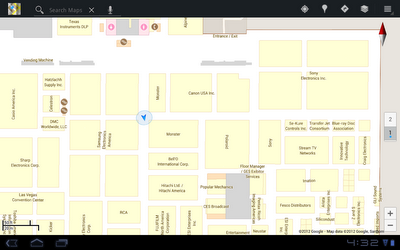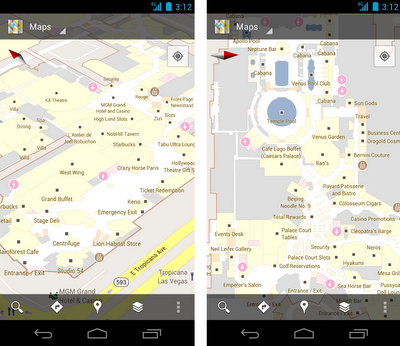At the 2012 Consumer Electronic Show (CES) in Las Vegas, NV, attendees will now be able to use Google Maps on their Android devices to help them find their way in the sea of exhibitors and attractions throughout the Las Vegas Convention Center, select resorts and casinos along the Las Vegas strip, as well as the Las Vegas McCarran International Airport.
Since November of last year, you’ve been able to use Google Maps in select places to get detailed floor plans and indoor location information within a few meters, as well as an accurate floor level location. Today, we’ve expanded the list of places with indoor maps by partnering with MGM Resorts International, Caesars Entertainment and others, to provide indoor maps for Caesars Palace, Bellagio, The Venetian, The Palazzo, MGM Grand and many more.
Left: MGM Grand Hotel and Casino, Right: Caesars Palace
Starting today, we’re also releasing some of the first floor plans in Google Maps that were uploaded through the Google Maps Floor Plans tool. From malls to convention centers, museums and educational institutions from California to New York you will now be able to see these floor plans in Google Maps for Android.
So the next time you are looking for the perfect table to win the jackpot or can’t find the nearest restroom, simply open Google Maps on your Android device and let indoor maps show you the way. If you’re attending CES, please come by the the Google Maps booth to learn more and preview our upcoming Google Maps game!


